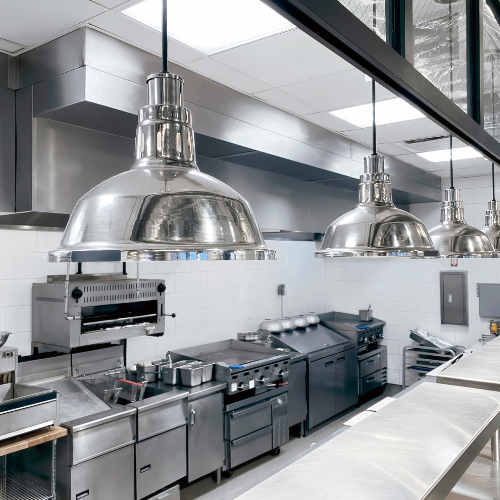
05 Feb Pest Control in Commercial Kitchens
Pest-Free Kitchen Mastery
Hey there, South Florida restaurateurs! Keeping your kitchens pest-free is probably at the top of your to-do list. Not just because it’s essential for passing health inspections, but also for keeping your customers happy and your reputation sparkling.
Let’s dive into some expert tips on making your commercial kitchen a fortress against unwanted critters.We all know that in the bustling and humid environment of South Florida, pests can feel just as much at home in your kitchen as your diners do in the dining room.
From the stealthy roach to the ever-persistent rodent, these uninvited guests can sneak into your establishment, threatening not only the health of your patrons but also the integrity of your business.
In this guide, we’ll break down the battle plan to maintain a clean, pest-free environment, ensuring that your kitchen remains a safe and welcoming place for both cooking and dining. With the right knowledge and tools at your disposal, you can turn the tide against pests and keep your focus on what you do best: serving up delicious meals.
Navigating Pest Hazards
In the bustling kitchens of South Florida, certain pests are more than just occasional visitors; they’re constant threats. Roaches, with their knack for survival, can spread bacteria across surfaces and foods.
Rodents, on the other hand, are not only a health risk but can cause physical damage to wires and structures, potentially leading to fire hazards. Flies, especially fruit flies, are attracted to fermenting fruits and vegetables, contaminating food with each landing.
Ants, though smaller, can be a huge nuisance, infiltrating every nook and cranny of your kitchen in search of sugar and protein.
The health implications of these pests are not to be taken lightly. Roaches can carry E. coli and Salmonella, while rodents are notorious for spreading Hantavirus and even Leptospirosis through their urine and droppings.
Flies have been linked to the spread of food poisoning and diarrhea. The presence of these pests in your kitchen can lead to severe health department sanctions, tarnish your restaurant’s reputation, and, in the worst cases, force closures. Compliance with health codes is non-negotiable, and understanding these regulations is paramount for every restaurant owner.
Pest-Free Kitchen Culture
An impeccable cleaning routine is your best weapon against pests. It involves more than just wiping down surfaces; it means deep cleaning kitchen equipment, floors, and drains regularly.
Implement a strict protocol for handling and storing food, including sealing ingredients in pest-proof containers and never leaving food exposed overnight. Emphasize the importance of cleanliness among your staff, making it a part of your restaurant’s culture.
Training should cover identifying signs of pests, proper food storage, and immediate steps to take when pests are detected. Encourage staff to report sightings without fear of reprimand. Regular training sessions can keep everyone up-to-date on the best practices for maintaining a clean, pest-free environment.
Fortify and Inspect
Pests can enter through the smallest openings, so make it a habit to inspect the exterior of your building for potential entry points. Seal gaps around doors, windows, and utility lines. Ensure that screens on windows and vents are intact and free from tears.
Regular maintenance checks can prevent water accumulation, which attracts pests looking for a drink. Keeping the exterior areas of your restaurant, like dumpsters and patios, clean and orderly can also reduce the likelihood of pests making their way inside.
Creating a routine for monitoring can help you catch infestations early, often before they become visible. Use sticky traps in strategic locations to monitor for roaches and flies. Regularly check dark and moist areas, like under sinks and refrigerators, for signs of rodents or roaches. Implementing these practices can give you a clear picture of your pest situation, helping you to act swiftly and effectively when issues arise.
Effective Pest Defense
IPM is about understanding the ecosystem in your kitchen and using that knowledge to prevent pest invasions. This might mean employing natural predators for certain pests, like using parasitic wasps for fly control in outdoor areas.
Chemical treatments are used sparingly, with a focus on targeted applications rather than widespread spraying. By focusing on long-term prevention through a combination of techniques, IPM reduces the reliance on chemicals, making your kitchen safer for staff and patrons alike.
Recognizing the signs that your pest situation is beyond DIY solutions is crucial. This might include seeing pests during the day (a sign of a large infestation), finding droppings, or noticing damage to food packaging. Professionals can offer customized solutions, ongoing monitoring, and, most importantly, peace of mind.
Conclusion
Achieving a pest-free commercial kitchen in South Florida requires commitment and strategic action. The essence of this journey is captured through diligent cleanliness, structural vigilance, and the proactive engagement of both staff and pest management professionals. By prioritizing these areas, restaurant owners can establish a robust defense against pests, safeguarding their patrons’ health and their establishment’s reputation.
Integrated Pest Management (IPM) emerges as a cornerstone strategy, emphasizing environmental responsibility alongside effective pest control. When prevention measures are overwhelmed, turning to professional pest control services ensures tailored, comprehensive solutions.
Ultimately, the goal is a harmonious balance between operational excellence and a pest-free environment, allowing restaurateurs to focus on what truly matters: creating memorable dining experiences. This guide serves as a beacon for those navigating the complexities of pest management, offering a path to success in the vibrant culinary landscape of South Florida.


No Comments